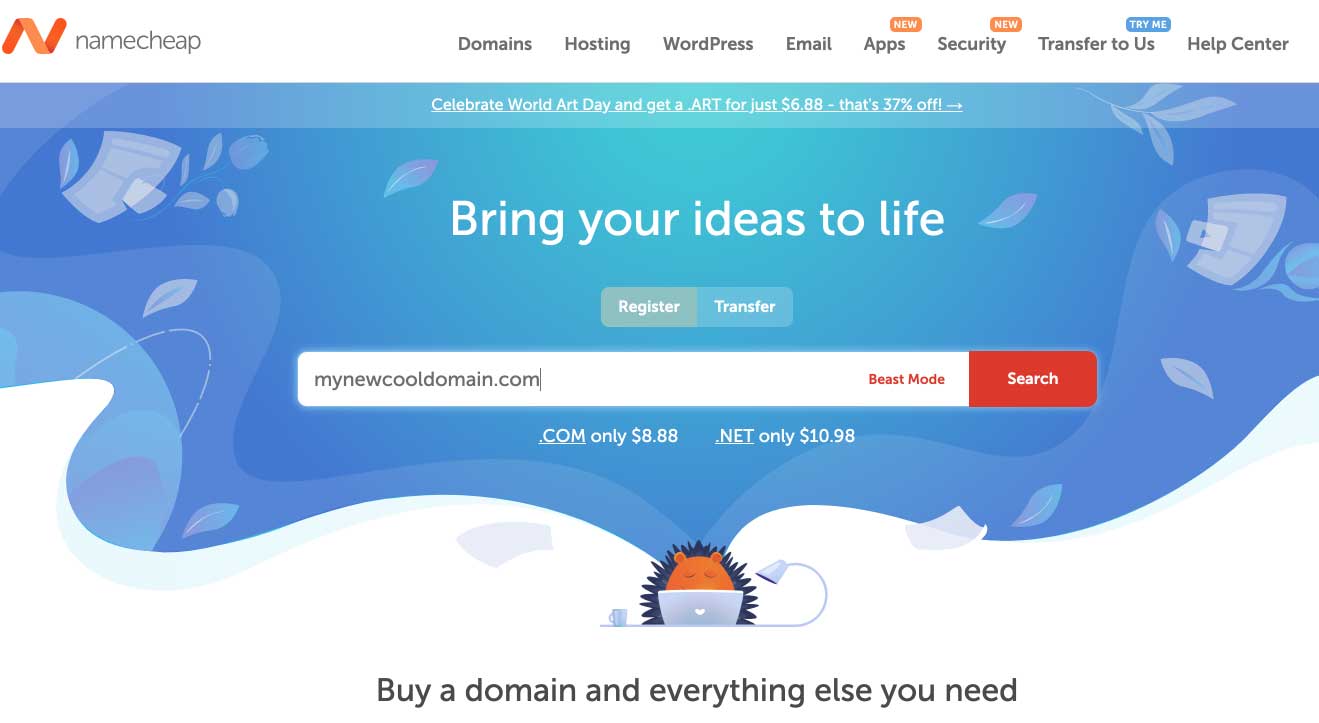How to Register a Domain Name for Your Website
Are you building a website? You’ll likely need to get yourself a domain name to go with it (unless you already have one).
I’m going to explain how to reserve for yourself (or your company, non-profit, or whatever organization you represent) a domain name that you can use as the “home base” for whatever it is you do.
There are lots of different ways to build a website, and there are lots of purposes for building a website. Whichever way you’ve decided to build your website and for whichever purpose you want to build it, whether for personal or for business reasons, having your own domain name is useful, and in many cases it’s essential.
Registering a Domain: A Quick Overview
I will go into much more detail about what’s involved with registering a domain name below. For those readers who just want a quick summary of how to get it done so you can move on with your day, here you go…
To register a domain, here are the steps:
- Choose a registrar. I register most of my domains with NameCheap ($8.88 per year).
- Search for the name you want to register. If it’s not available, you’ll need to either get creative about finding another version of the domain name you want, or you can attempt to purchase the domain from the current owner.
- Purchase the domain through the registrar’s checkout system.
It really is that simple in situations where the domain name is actually available. To register a domain name – assuming that hasn’t been reserved already – you just have to buy it from a domain registrar that is ICANN accredited.
Pricing for domains varies among registrars, but you shouldn’t expect to pay more than $15 per year for your initial domain name purchase and the annual domain name renewal fee.
Do I Need a Domain?
Depending upon what your objective is, it’s possible that you don’t need a domain name. If you’re working on a temporary project or just want to publish some things online for a small group of friends, you can simply set up an account on one of the free publishing platforms, which give you space on their platforms to publish your content. If you’re not looking to build a long-term brand, or your publishing content just as a casual hobby, you can publish on any of the following without having your own domain name:
- Blogspot.com
- WordPress.com
- Medium.com
- HubPages.com
There are several other solid publishing platforms that don’t require you to have your own domain name to publish content on their setups.
After Domain Registration: What’s Next?
After you’ve registered your new domain, if you try to access it by entering your new domain into a browser, you’ll likely see that the domain points to a landing page created automatically by the registrar you used. In order to have your new domain resolve to a spiffy website, you’ll need to point the domain to whatever hosting provider you’re using to host your website.
Pointing your new domain to your web host is done by updating the DNS (domain name service) entries to the IP address that identifies the web server where your website is stored.
Pointing Your Domain Through Registrar DNS Tool
After you’ve purchased your domain, you can login to your registrar and find a section that is labeled DNS & Nameservers or something similar to that. When you click through to that page in your domain management console, you should see a place to update the current nameservers or to add new ones.
To update your domain nameservers, you will need to know the DNS address of your web host, which you can normally easily find when you login to the hosting provider you’ve chosen. If you haven’t purchased webs hosting, that would be the next step in setting up your website after registering your domain.
Buying Hosting Through Your Registrar
Most domain registrars naturally sell web hosting plans from which you can purchase a web hosting package that suits your needs. Many who are new to setting up a website or who want to keep things simple or consolidated will go ahead and purchase web hosting through their domain registrar. Doing so makes it a bit more streamlined to point your new domain to the place where your web content is being hosted.







